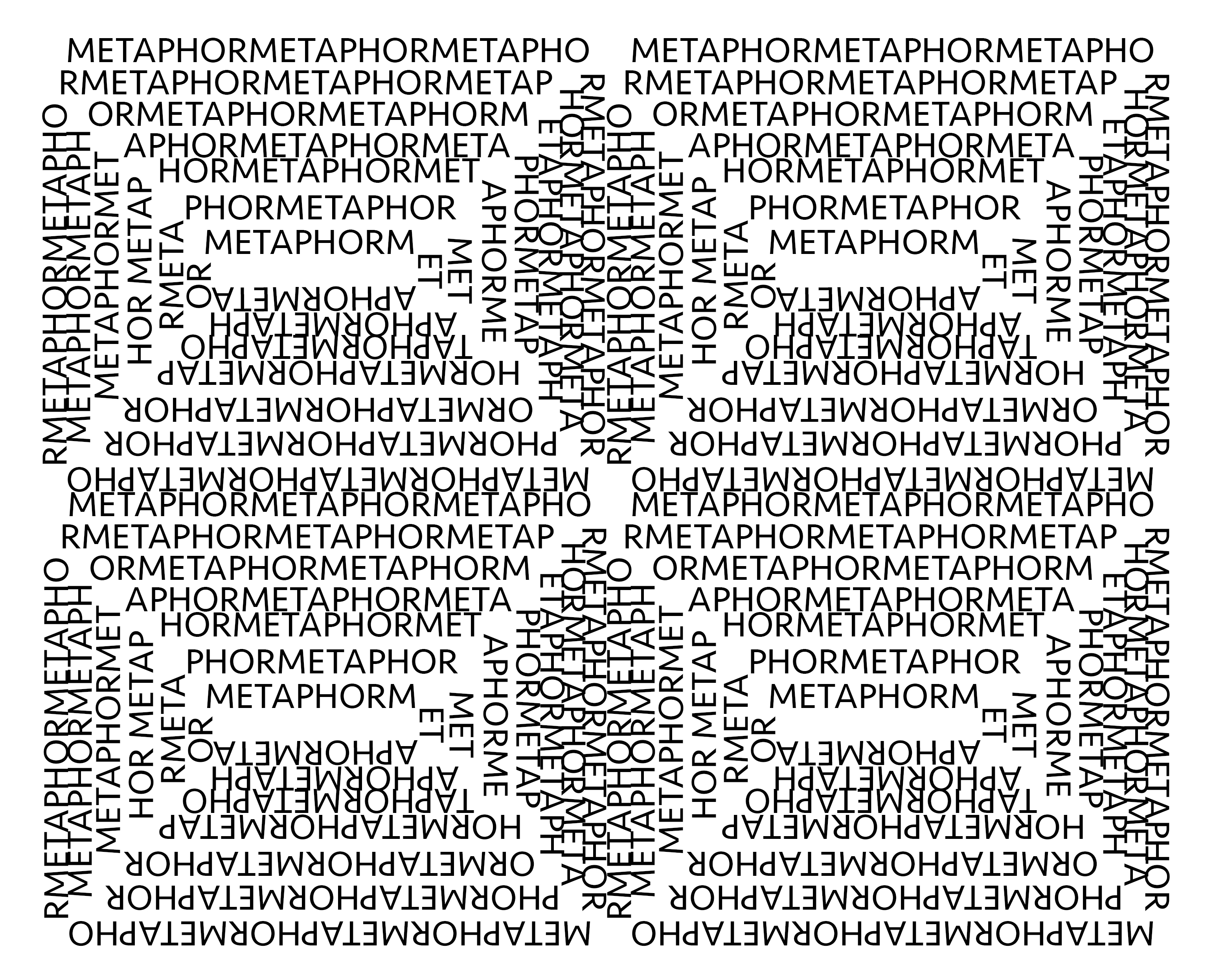
Bread and language are tied at the waist. Bread, as much a word as a spectrum of experience, or a picture, or just a punctum in a picture, or an idea about something else altogether... its translations have never been direct. Synonyms flex and fray and context matters. Its definitions manage to be obvious but also difficult to articulate. Bread is money, bread is life, bread is a bundle of pulverized grain and water smashed together and heated until edible. Which of these is a metaphor?
Metaphors are flashlights for cogencies, but they’re back alleys, too. We’re taught metaphor when young enough to ask why we can’t just say what we mean, instead, but apparently too young to commit to that directness. Zadie talks of Lazy Rivers, like Heraclitus, but I made a bread of flesh. A Frankenstein, product of time and some spores coaxed invisibly from the air.
Why should I call this bread flesh when it’s just flour and water? Does it make you feel sick to think of eating it? Does it do the opposite- cull you to care, to coddle, and savor? To be sure, it’s just bread, but lacking a home or a label. It’s made of a very wet dough poured onto a sheet tray and left to fester before baking. It’s reminiscent of some others (focaccia, a naked pizza), but unyielding of a name. It’s just a flat fleshy thing, and now I know I say ‘flesh’ so that you might understand, without any titular reference, what it feels like from far away. It will either implore you to make it, or the exact opposite.
Metaphors are flashlights for cogencies, but they’re back alleys, too. We’re taught metaphor when young enough to ask why we can’t just say what we mean, instead, but apparently too young to commit to that directness. Zadie talks of Lazy Rivers, like Heraclitus, but I made a bread of flesh. A Frankenstein, product of time and some spores coaxed invisibly from the air.
Why should I call this bread flesh when it’s just flour and water? Does it make you feel sick to think of eating it? Does it do the opposite- cull you to care, to coddle, and savor? To be sure, it’s just bread, but lacking a home or a label. It’s made of a very wet dough poured onto a sheet tray and left to fester before baking. It’s reminiscent of some others (focaccia, a naked pizza), but unyielding of a name. It’s just a flat fleshy thing, and now I know I say ‘flesh’ so that you might understand, without any titular reference, what it feels like from far away. It will either implore you to make it, or the exact opposite.
Fleshy Flat I like this one because it delivers all the benefits of a fermented dough without the shaping skills/starter vigor required for a boule or batard. You just mix, wait, pour, wait. Time does a lot of the work. Thank you, time.
INGREDIENTS
325g all purpose flour (preferably organic)
175g whole wheat flour (preferably organic and freshly milled)
75g firm rye levain, refreshed and active
400g water
10g salt
75g water
Olive oil
DIRECTIONS
Mix flour, levain and first measurement of water. Cover bowl with a plastic bag and let rest for 10-20 minutes (this is called an autolyse).
Add the salt and remaining water. Scrunch the dough between your fingers, breaking up the gluten strands and incorporating the new ingredients. Do this until there is no excess water left in the bottom of the bowl. The dough will look like a bowl of mucilaginous oatmeal. Totally disgusting. Let sit again, covered, for 15 minutes.
Pour a tablespoon or two of olive oil around the edges of the dough and scoop the dough up from the side with one hand like you’re lifting the dead weight of a child who fell asleep on the couch. Put it to bed- flip your palm downwards, folding the dough onto itself from the top. Rotate the bowl around and continue this motion on all sides. Continue for about 20 seconds. Pour another light tablespoon of olive oil on top and cover and rest again for 15 minutes.
Do this three more times over the course of 45 minutes. The dough should feel very wet but elastic and smooth, and should not tear when lightly pulled upwards. After all of your folds are complete, cover and let sit at room temperature for 3 to 4 hours.
After this fermentation, put the dough in the refrigerator overnight, but preferably around 36 hours or more.
When ready to bake, line a heavy baking sheet with parchment and drizzle thoroughly with olive oil. Pour the dough onto it, keeping the smooth exterior as the top surface if possible. Gently press outwards with your fingertips, but do not pull or be rough with it. The tension will ease as it sits. Cover (I use another inverted sheet tray to do this).
After 30 minutes, return to it and use greased hands to stretch the dough gently outwards into a round, at least an inch thick. Cover again and let proof for about two hours.
20 minutes before you’re ready to bake, preheat the oven to 425 degrees. Once dough is proofed, gently dimple with grease hands (if you don’t you’re likely to get one huge air bubble, which is also fine) and drizzle with olive oil and salt.
Bake for 20 minutes, or until brown spots make themselves known on the surface. Cool on a wire rack, just long enough to not burn yourself while eating.
DIRECTIONS
Mix flour, levain and first measurement of water. Cover bowl with a plastic bag and let rest for 10-20 minutes (this is called an autolyse).
Add the salt and remaining water. Scrunch the dough between your fingers, breaking up the gluten strands and incorporating the new ingredients. Do this until there is no excess water left in the bottom of the bowl. The dough will look like a bowl of mucilaginous oatmeal. Totally disgusting. Let sit again, covered, for 15 minutes.
Pour a tablespoon or two of olive oil around the edges of the dough and scoop the dough up from the side with one hand like you’re lifting the dead weight of a child who fell asleep on the couch. Put it to bed- flip your palm downwards, folding the dough onto itself from the top. Rotate the bowl around and continue this motion on all sides. Continue for about 20 seconds. Pour another light tablespoon of olive oil on top and cover and rest again for 15 minutes.
Do this three more times over the course of 45 minutes. The dough should feel very wet but elastic and smooth, and should not tear when lightly pulled upwards. After all of your folds are complete, cover and let sit at room temperature for 3 to 4 hours.
After this fermentation, put the dough in the refrigerator overnight, but preferably around 36 hours or more.
When ready to bake, line a heavy baking sheet with parchment and drizzle thoroughly with olive oil. Pour the dough onto it, keeping the smooth exterior as the top surface if possible. Gently press outwards with your fingertips, but do not pull or be rough with it. The tension will ease as it sits. Cover (I use another inverted sheet tray to do this).
After 30 minutes, return to it and use greased hands to stretch the dough gently outwards into a round, at least an inch thick. Cover again and let proof for about two hours.
20 minutes before you’re ready to bake, preheat the oven to 425 degrees. Once dough is proofed, gently dimple with grease hands (if you don’t you’re likely to get one huge air bubble, which is also fine) and drizzle with olive oil and salt.
Bake for 20 minutes, or until brown spots make themselves known on the surface. Cool on a wire rack, just long enough to not burn yourself while eating.
Mix flour, levain and first measurement of water. Cover bowl with a plastic bag and let rest for 10-20 minutes (this is called an autolyse).
Add the salt and remaining water. Scrunch the dough between your fingers, breaking up the gluten strands and incorporating the new ingredients. Do this until there is no excess water left in the bottom of the bowl. The dough will look like a bowl of mucilaginous oatmeal. Totally disgusting. Let sit again, covered, for 15 minutes.
Pour a tablespoon or two of olive oil around the edges of the dough and scoop the dough up from the side with one hand like you’re lifting the dead weight of a child who fell asleep on the couch. Put it to bed- flip your palm downwards, folding the dough onto itself from the top. Rotate the bowl around and continue this motion on all sides. Continue for about 20 seconds. Pour another light tablespoon of olive oil on top and cover and rest again for 15 minutes.
Do this three more times over the course of 45 minutes. The dough should feel very wet but elastic and smooth, and should not tear when lightly pulled upwards. After all of your folds are complete, cover and let sit at room temperature for 3 to 4 hours.
After this fermentation, put the dough in the refrigerator overnight, but preferably around 36 hours or more.
When ready to bake, line a heavy baking sheet with parchment and drizzle thoroughly with olive oil. Pour the dough onto it, keeping the smooth exterior as the top surface if possible. Gently press outwards with your fingertips, but do not pull or be rough with it. The tension will ease as it sits. Cover (I use another inverted sheet tray to do this).
After 30 minutes, return to it and use greased hands to stretch the dough gently outwards into a round, at least an inch thick. Cover again and let proof for about two hours.
20 minutes before you’re ready to bake, preheat the oven to 425 degrees. Once dough is proofed, gently dimple with grease hands (if you don’t you’re likely to get one huge air bubble, which is also fine) and drizzle with olive oil and salt.
Bake for 20 minutes, or until brown spots make themselves known on the surface. Cool on a wire rack, just long enough to not burn yourself while eating.
